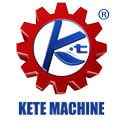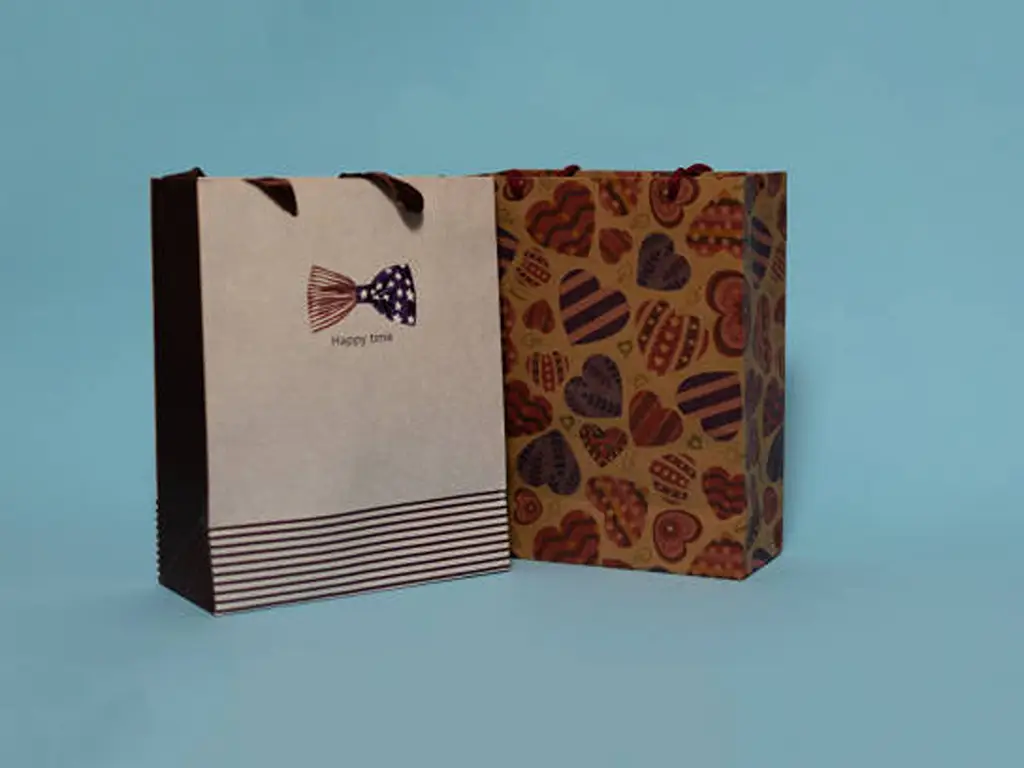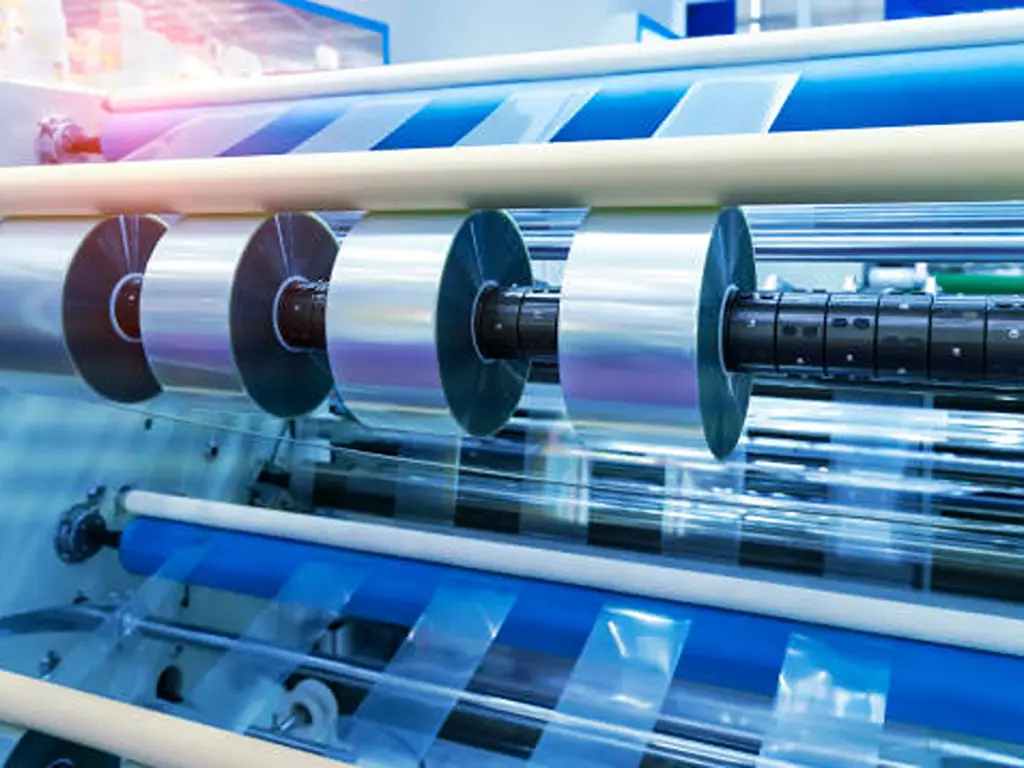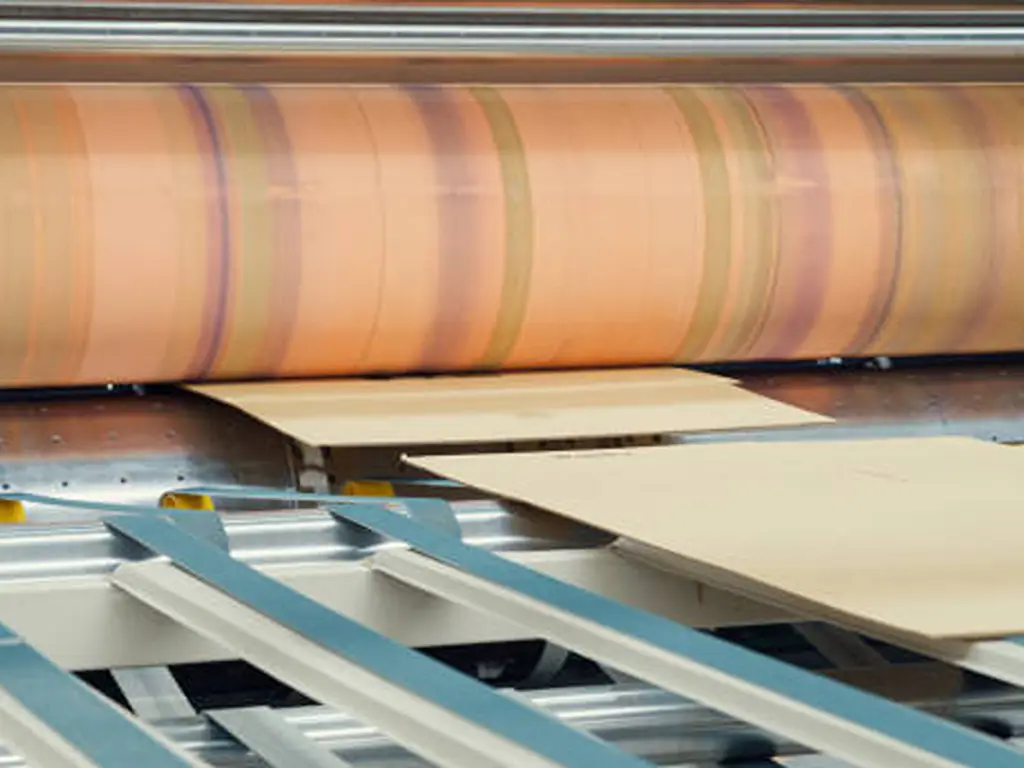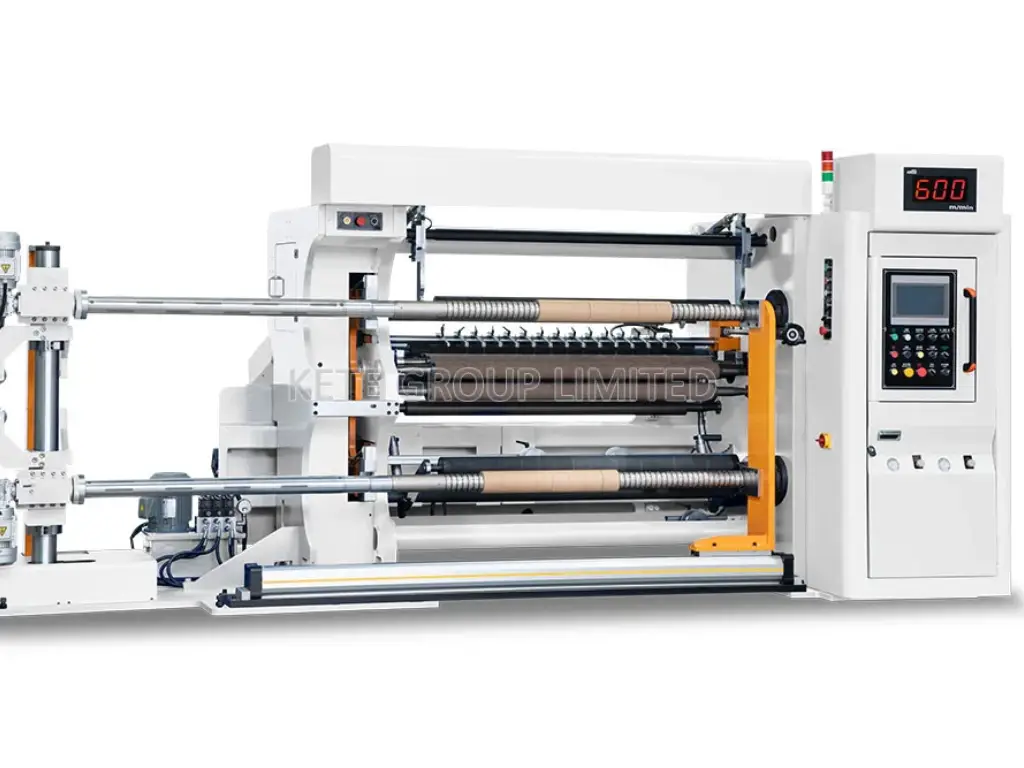परिचय
When it comes to the world of food business, the price tag on packaging isn’t just about numbers. It’s the heartbeat of a brand’s survival. Product packaging serves as a critical interface between your brand and the consumer. It’s an engineered system designed to protect the product, communicate brand value, and drive purchasing decisions.. It’s a game-changer in your product’s journey, from keeping it fresh to making it irresistible to your audience. But here’s the twist: while packaging can dazzle, the price of packaging can also stack up, nudging your unit price. So, what’s the real cost of that handshake? Dive into this guide, and let’s unravel that mystery together. As manufacturers of the machinery that powers the packaging industry, we at KETE offer a unique behind-the-scenes look at what truly drives the final packaging price you pay.

महान खाद्य पैकेजिंग तसलीम
क्या आप खाद्य पैकेजिंग की यात्रा पर निकलने वाले हैं? तो तैयार हो जाइए, क्योंकि हर विकल्प के साथ वित्तीय पहलू भी जुड़ा हुआ है।
प्लास्टिक कंटेनरपैकेजिंग की दुनिया में हल्के वजन के चैंपियन। वे अक्सर बजट के अनुकूल होते हैं और आपके शिपिंग लागत के लिए वरदान साबित हो सकते हैं। लेकिन, वे भारी वस्तुओं के साथ लड़खड़ा सकते हैं, और ईमानदारी से कहें तो धरती माता उनकी सबसे बड़ी प्रशंसक नहीं है।
कार्डबोर्ड कार्टनबहुमुखी नायक। वे अक्सर जेब पर भारी नहीं पड़ते और डिजिटल प्रिंट के साथ उन्हें और भी आकर्षक बनाया जा सकता है, हालांकि उस आकर्षकता के लिए अलग से कीमत चुकानी पड़ती है। हालांकि वे बहुत हल्के होते हैं, जिससे शिपिंग आसान हो जाती है, लेकिन वे हमेशा भोजन की ताज़गी के संरक्षक नहीं हो सकते।
कांच की बोतलें: सुरुचिपूर्ण अभिजात वर्ग। वे प्रीमियम वाइब्स को उजागर करते हैं और आपके भोजन को शुद्ध रखने में दृढ़ हैं। लेकिन, उनकी सुंदरता एक कीमत के साथ आती है, खासकर जब आप शिपिंग को ध्यान में रखते हैं। वे भारी और थोड़े नाजुक हैं।
पैकेजिंग के विभिन्न प्रकार किसी कहानी के अध्याय की तरह होते हैं, जो न केवल आपके उत्पाद की कहानी को प्रभावित करते हैं, बल्कि आपकी जेब की गहराई को भी प्रभावित करते हैं। कच्चे माल की कहानियों से लेकर आपूर्ति श्रृंखलाओं के महाकाव्यों और डिलीवरी के अंतिम पर्दा कॉल तक, आपकी पैकेजिंग पसंद आपके बजटीय खेल का निर्देशक है।
To give you a clearer financial picture, here’s a quick-reference table comparing common packaging types with their estimated unit cost ranges. These prices typically reflect a standard order quantity of around 5,000 units.
| सामग्री का प्रकार | Common Use Examples | पेशेवरों | दोष | Est. Unit Cost Range |
| Corrugated Cardboard | Shipping Boxes, Mailer Boxes | Durable, protective, recyclable | Bulky, basic appearance unless printed | $0.50 – $3.00 |
| Folding दफ़्ती | Cereal Boxes, Product Boxes | Lightweight, highly printable | Less protective than corrugated | $0.30 – $2.00 |
| Rigid Box (Paperboard) | Luxury Goods, Gift Sets | Premium feel, extremely durable | Expensive, bulky to ship | $2.50 – $10.00+ |
| Flexible Pouch | Snacks, Coffee, Liquids | Lightweight, excellent barrier properties | Can feel less premium | $0.20 – $1.50 |
| Glass Jar/Bottle | Sauces, Beverages, Preserves | Premium, inert, recyclable | Heavy, fragile, high shipping cost | $0.60 – $2.50 |
| Plastic Container (PET, PP) | Takeout, Salads, Berries | Lightweight, versatile, cheap | Negative environmental perception | $0.20 – $1.00 |
संबंधित पोस्ट: खाद्य पैकेजिंग के प्रकार: प्रमुख उद्योग आपूर्तिकर्ताओं को अवश्य जानना चाहिए
पैकेजिंग लागत को प्रभावित करने वाले कारक
पैकेजिंग लागत के रहस्य को सुलझाना एक पहेली को एक साथ जोड़ने जैसा है। प्रत्येक घटक एक भूमिका निभाता है, और प्रत्येक भाग को समझने से आपको बड़ी तस्वीर देखने में मदद मिल सकती है।
जैविक बनाम गैर-जैविक सामग्रियों की पैकेजिंग की लागत कितनी है?
जब पैकेजिंग सामग्री की बात आती है, तो हमेशा जैविक बनाम गैर-जैविक के बारे में चर्चा होती है। लेकिन इसका आपके बटुए पर क्या असर होगा?
| पेशेवरों | दोष | |
| कार्बनिक सामग्री | वे पर्यावरण-अनुकूल हैं, प्रायः जैव-निम्नीकरणीय हैं, तथा ऐसे विशिष्ट बाजार को आकर्षित कर सकते हैं जो टिकाऊ उत्पादों के लिए प्रीमियम का भुगतान करने को तैयार हैं। | वे महंगे भी हो सकते हैं। चाहे वह जैविक कपास के बैग हों या बांस आधारित पैकेजिंग, कच्चे माल की लागत अक्सर अधिक होती है। |
| अकार्बनिक सामग्री | आमतौर पर अधिक किफायती। प्लास्टिक, कुछ कार्डबोर्ड और अन्य गैर-जैविक सामग्री अपनी लागत प्रभावशीलता के कारण वर्षों से उद्योग मानक रहे हैं। | हो सकता है कि वे पर्यावरण के प्रति जागरूक उपभोक्ताओं को पसंद न आएं। साथ ही, स्थिरता के बारे में बढ़ते नियमों के साथ, केवल गैर-जैविक सामग्रियों पर निर्भर रहना एक जोखिम भरी दीर्घकालिक रणनीति हो सकती है। |
तो, क्या जैविक हमेशा ज़्यादा महंगा होता है? ज़रूरी नहीं। हालाँकि शुरुआती लागत ज़्यादा हो सकती है, लेकिन पर्यावरण के अनुकूल उत्पादों के लिए ज़्यादा पैसे देने को तैयार बाज़ार में पहुँचना संतुलन बना सकता है। दूसरी तरफ़, गैर-जैविक सामग्री, सस्ती होने के बावजूद, अपनी चुनौतियों के साथ आती है, खासकर ऐसे दौर में जब स्थिरता सबसे अहम है।
क्या पर्यावरण अनुकूल पैकेजिंग अधिक महंगी है?
यह एक पुराना सवाल है: क्या पर्यावरण के अनुकूल पैकेजिंग के लिए मुझे ज़्यादा कीमत चुकानी पड़ेगी? बायोडिग्रेडेबल सामग्रियों और टिकाऊ उत्पादन प्रक्रियाओं के साथ पर्यावरण के अनुकूल पैकेजिंग भविष्य की तरह लगती है। लेकिन क्या यह ज़्यादा महंगी है?
Initial Costs: Yes, materials like biodegradable plastics or recycled paperboard can come with a higher price tag initially. Custom printing on these materials? That’s another added cost.
Long-Term Benefits: However, there’s a silver lining. Brands that adopt eco-friendly packaging can market their products as sustainable, potentially attracting a larger customer base. Over time, this can lead to increased sales, offsetting the initial investment in eco-friendly packaging.
Regulations and Tax Benefits: Some regions offer tax incentives for companies that adopt sustainable practices. Plus, with stricter regulations around packaging waste, investing in eco-friendly packaging now might save you from hefty fines in the future.
In essence, while the initial packaging expenses of eco-friendly packaging might be higher, the long-term benefits, both in terms of brand image and potential financial incentives, can make it a worthwhile investment.
थोक बनाम बुटीक दुविधा
क्या आप कभी इस बात पर बहस करते हुए चौराहे पर खड़े हुए हैं कि थोक में खरीदना और सिर्फ़ ज़रूरत के हिसाब से सामान खरीदना बेहतर है? पैकेजिंग लागत भी इसी तरह की पहेली पेश करती है। पहली नज़र में, थोक ऑर्डर अपनी कम यूनिट लागत और पैमाने की आशाजनक अर्थव्यवस्थाओं के कारण आकर्षक लगते हैं। लेकिन शुरुआती निवेश भारी हो सकता है, जैसे कि एक साल के लिए स्वादिष्ट कॉफ़ी का स्टॉक करना क्योंकि यह छूट पर है। क्या आपके पास इसे स्टोर करने की क्षमता है?
इसके विपरीत, छोटे ऑर्डर एक कारीगर चॉकलेट बार का स्वाद लेने जैसा है। प्रति-आइटम लागत अधिक हो सकती है, लेकिन वित्तीय प्रतिबद्धता प्रबंधनीय है। साथ ही, यह बाजार में बदलाव, डिजाइन को परिष्कृत करने या रणनीतियों को बदलने की चपलता प्रदान करता है।
कुंजी? संतुलन बनाना। यह बजट बाधाओं, भंडारण विचारों और बाजार की गतिशीलता के बीच सामंजस्य स्थापित करने के बारे में है। जबकि थोक ऑर्डर का आकर्षण शक्तिशाली है, कभी-कभी छोटे रन की चपलता अमूल्य रणनीतिक लाभ प्रदान करती है।
This entire dilemma revolves around a core manufacturing principle: economies of scale. The reason bulk orders have a lower unit cost is because of significant one-time setup fees. For any custom packaging run, a supplier has to create custom printing plates and a cutting die (a tool that cuts the box shape). These fixed costs can range from $200 to over $1,000.
On a small order of 500 units, that $500 setup fee adds $1.00 to each box.
On a large order of 10,000 units, the same fee adds only $0.05 to each box.
Understanding this helps you see why your order quantity is the single most powerful lever you have for influencing your unit price.

ग्राफ़िक और स्ट्रक्चरल प्रिंटिंग की कला और विज्ञान
सौंदर्यबोध का आकर्षण
क्या आप कभी किसी शेल्फ़ पर रखे किसी उत्पाद की ओर चुंबकीय रूप से आकर्षित हुए हैं, भले ही वह आपकी शॉपिंग लिस्ट में न हो? यही बेदाग पैकेजिंग की ताकत है। वे चमकीले रंग, मनमोहक फ़ॉन्ट और मनमोहक पैकेजिंग डिज़ाइन उपभोक्ताओं को लुभाने के लिए सावधानीपूर्वक तैयार किए गए हैं। लेकिन इस तरह के आकर्षण के साथ-साथ इसकी कीमत भी जुड़ी होती है।
High-quality graphic reproduction is a function of precise machinery and material science. The final cost is a direct result of the manufacturing processes required. Every shade, every line, and every intricate detail is pivotal. Premium graphic printing ensures the vibrancy of colors, the clarity of text, and the precision of images. But achieving this artistry demands advanced digital printing technologies and specialized inks. Think of it as commissioning a bespoke artwork; the personalized touch is unparalleled but comes at higher printing costs.
दृश्यों से परे: स्पर्शनीय अनुभव
फिर पैकेजिंग का संरचनात्मक आयाम है। पैकेज का दिखने में आकर्षक होना एक बात है, लेकिन यह स्पर्शनीय आनंद प्रदान करना बिलकुल दूसरी बात है। वे बनावट वाले पैटर्न, अभिनव तह या अनोखे उद्घाटन अनबॉक्सिंग अनुभव को बढ़ाते हैं। हालाँकि, इन स्पर्शनीय तत्वों को तैयार करना जटिल है। इसके लिए विशेष मशीनरी और तकनीकों की आवश्यकता होती है, जो, आश्चर्यजनक रूप से, खर्च को बढ़ाती हैं।
संक्षेप में, जबकि उत्कृष्ट ग्राफिक्स और अभिनव संरचनाओं का आकर्षण सम्मोहक है, उन्हें संबंधित लागतों के साथ तौलना महत्वपूर्ण है। वाणिज्यिक क्षेत्र में, यह एक स्थायी प्रभाव बनाने और स्थायी लाभप्रदता सुनिश्चित करने के बीच एक नृत्य है।
A Practical Breakdown: In technical terms, the cost of “visuals” depends on:
Printing Method: Digital printing is ideal for short runs (under 1,000 pieces) as it has no plate setup fees. For larger jobs, Offset and Flexo printing offer a far superior per-unit cost.
Finishes: Each special finish—such as foil stamping or embossing—represents a separate pass through a specialized machine. This adds process time, labor, and tooling costs for each unit.
Insider Tip: The “specialized machinery” that creates these tactile experiences is key. A supplier’s cost for complex structures is directly tied to the precision and automation of their die-cutting and folder-gluer machines. Modern, efficient equipment (like the solutions KETE provides) minimizes waste and manual labor, making sophisticated designs more accessible and affordable for you.
खाद्य पैकेजिंग में गुणवत्ता नियंत्रण और परीक्षण की छिपी लागतें
खाद्य पैकेजिंग में गुणवत्ता नियंत्रण कुछ हद तक उस सावधान मित्र की तरह है जो किसी बड़ी यात्रा से पहले हर चीज़ की दोबारा जाँच करता है। परेशान करने वाला? शायद। ज़रूरी? बिल्कुल। यह सुनिश्चित करना कि पैकेजिंग सभी गुणवत्ता और सुरक्षा मानकों को पूरा करती है, सर्वोपरि है। लेकिन यह गहनता, जबकि अमूल्य है, अपनी लागतों के साथ आती है जो शायद तुरंत स्पष्ट न हों।
कल्पना कीजिए कि आप कोई उत्पाद लॉन्च करते हैं और फिर पैकेजिंग में खामी के कारण उसे वापस बुला लेते हैं। यह दुःस्वप्न है, है न? यहीं पर गुणवत्ता नियंत्रण की भूमिका आती है, जो संरक्षक देवदूत की तरह काम करता है और सुनिश्चित करता है कि हर पैकेज सही हो। लेकिन इस सतर्कता के लिए विभिन्न चरणों में कठोर जाँच, विशेष उपकरण और एक सतर्क टीम की आवश्यकता होती है। और समय ही पैसा है। गुणवत्ता नियंत्रण प्रक्रिया जितनी लंबी होगी, श्रम लागत उतनी ही अधिक होगी।
फिर परीक्षण चरण आता है। यह बड़े शो से पहले की ड्रेस रिहर्सल की तरह है। किसी भी पैकेजिंग समाधान के बाज़ार में आने से पहले, उसे कई परीक्षणों से गुजरना पड़ता है। स्थायित्व परीक्षण, सुरक्षा परीक्षण, तनाव परीक्षण - आप इसे नाम दें। ये परीक्षण सुनिश्चित करते हैं कि पैकेजिंग वास्तविक दुनिया की चुनौतियों का सामना कर सकती है, शिपिंग के दौरान खराब हैंडलिंग से लेकर अलग-अलग तापमान के संपर्क में आने तक। लेकिन इन परीक्षण परिदृश्यों को सेट करना, और कभी-कभी उन्हें दोहराना भी, संसाधनों की बर्बादी हो सकती है।
अंत में, जबकि गुणवत्ता नियंत्रण और परीक्षण पृष्ठभूमि प्रक्रियाओं की तरह लग सकते हैं, वे लागतों के मामले में सबसे आगे और केंद्र में हैं। यह एक संतुलनकारी कार्य है, जो वित्तीय तराजू को बहुत अधिक प्रभावित किए बिना शीर्ष-स्तरीय गुणवत्ता सुनिश्चित करता है।
स्वचालन और मैनुअल श्रम किस प्रकार मूल्य निर्धारण को प्रभावित करते हैं
एक पुरानी बहस है: मनुष्य बनाम मशीन। पैकेजिंग की दुनिया में, यह बहस बिल्कुल नए आयाम पर पहुंच गई है। क्या आप मशीनों की सटीकता पर भरोसा करते हैं या मानवीय हाथों के स्पर्श पर? यह कुछ हद तक हस्तनिर्मित एस्प्रेसो और स्वचालित कॉफी मशीन से बने एस्प्रेसो के बीच चयन करने जैसा है। दोनों के अपने-अपने गुण हैं, लेकिन वे अलग-अलग कीमत के साथ आते हैं।
अपने घूमते गियर और चमकती रोशनी के साथ, स्वचालन दक्षता का वादा करता है। मशीनें थकती नहीं हैं, और ब्रेक नहीं लेती हैं। वे एक के बाद एक उत्पाद बनाते हैं, जिसकी बराबरी करना मुश्किल है। लेकिन यहाँ एक समस्या है: वे शुरू में भारी कीमत के साथ आते हैं। यह एक टॉप-ऑफ़-द-लाइन स्मार्टफ़ोन खरीदने जैसा है; यह अभी आपकी जेब पर भारी पड़ सकता है, लेकिन इसकी विशेषताएँ और लंबी उम्र इसे निवेश के लायक बना सकती हैं। समय के साथ, स्वचालन से महत्वपूर्ण बचत हो सकती है, खासकर जब आप कम त्रुटियों और बढ़े हुए आउटपुट को ध्यान में रखते हैं।
दूसरी तरफ, मैनुअल श्रम है। मानवीय स्पर्श, विसंगतियों को पहचानने की क्षमता और चलते-फिरते अनुकूलन करने की लचीलेपन के बारे में कुछ कहा जा सकता है। लेकिन मनुष्य, हमारी अपनी सीमाएँ हैं। हमें ब्रेक की ज़रूरत होती है, हम गलतियाँ कर सकते हैं, और हमारी गति मशीन से मेल नहीं खा सकती। मूल्य निर्धारण के दृष्टिकोण से, मैनुअल श्रम शुरू में अधिक किफायती लग सकता है, लेकिन इसमें निरंतर लागतें होती हैं। वेतन, प्रशिक्षण और कभी-कभी डाउनटाइम के बारे में सोचें।
तो, सबसे अच्छा विकल्प कौन सा है? यह एक ऐसा उत्तर नहीं है जो सभी के लिए एक जैसा हो। चाहे आप स्वचालन की ओर झुकें या मानवीय स्पर्श को प्राथमिकता दें, यह याद रखना ज़रूरी है कि दोनों ही अपनी-अपनी लागतों के साथ आते हैं। यह आपकी उत्पादन आवश्यकताओं को समझने, आपके संचालन के पैमाने का आकलन करने और फिर एक सूचित विकल्प बनाने के बारे में है। और व्यवसाय के खेल में, यह आपके पैसे का सबसे अच्छा उपयोग करने के बारे में है।
शिपिंग और लॉजिस्टिक्स पैकेजिंग लागत को कैसे प्रभावित करते हैं?
शिपिंग एक रोड ट्रिप की योजना बनाने जैसा है। गंतव्य, मेरा मतलब इस मामले में उत्पाद है, ज़रूरी है, लेकिन यात्रा? यहीं पर चीज़ें गड़बड़ हो सकती हैं।
पैकेजिंग का आपका चुनाव शिपिंग लागत में बहुत बड़ा अंतर ला सकता है। भारी सामान, नाजुक सामान, भारी पैकेजिंग - ये सब मिलकर खर्च बढ़ जाते हैं। और चलिए अंतर्राष्ट्रीय शिपिंग की बात ही न करें। यह विदेश यात्रा की योजना बनाने जैसा है; रसद एक सिरदर्द हो सकता है।
लेकिन यहाँ एक बात है: कभी-कभी, टिकाऊ पैकेजिंग पर थोड़ा ज़्यादा खर्च करना आपको लंबे समय में बचा सकता है। यह सबसे अच्छा तरीका है। इसे एक अच्छे ट्रैवल सूटकेस में निवेश करने के रूप में सोचें। यह महंगा हो सकता है, लेकिन यह आपको उत्पाद के नुकसान या खोए हुए सामान की अतिरिक्त लागत से बचाएगा।
खाद्य सुरक्षा मानकों को पूरा करने की लागत
नियम उस सख्त शिक्षक की तरह हैं जो आपको स्कूल में मिलता है। आप जानते हैं, वह शिक्षक जो ऐसा लगता था कि वह छोटी-छोटी बातों पर ध्यान दे रहा है, लेकिन वास्तव में वह आपको सफलता के लिए तैयार कर रहा था? हाँ, पैकेजिंग की दुनिया में खाद्य सुरक्षा मानक यही हैं। वे आपके जीवन को दुखी करने के लिए नहीं हैं; वे यह सुनिश्चित करने के लिए हैं कि आपका उत्पाद सुरक्षित और शीर्ष स्तर का हो। लेकिन इसे मीठा न बनाएँ; इन मानकों को पूरा करना पहाड़ पर चढ़ने जैसा लग सकता है।
सबसे पहले, कागजी कार्रवाई है। यह आपके उत्पाद के लिए करों का भुगतान करने जैसा है। आपको यह साबित करना होगा कि आपकी पैकेजिंग अच्छी है, और इसमें अक्सर परीक्षण, प्रमाणन और शायद एक या दो वकील भी शामिल होते हैं। और ईमानदारी से कहें तो इनमें से कोई भी काम सस्ता नहीं है।
फिर आपको अपनी पैकेजिंग में कुछ वास्तविक बदलाव करने पड़ सकते हैं। हो सकता है कि आपको पता चले कि आप जिस स्याही का इस्तेमाल करने की योजना बना रहे थे वह खाद्य-सुरक्षित नहीं है, या प्लास्टिक में कुछ समस्याएँ हैं। यह एक सड़क यात्रा की योजना बनाने जैसा है और बीच रास्ते में आपको एहसास होता है कि आपकी कार को नए टायर की ज़रूरत है। अनियोजित, लेकिन ज़रूरी।
और अंतर्राष्ट्रीय मानकों के बारे में तो बात ही मत करो। अगर आप विदेश में अपना उत्पाद बेचने की योजना बना रहे हैं, तो आपको नियमों का एक नया सेट अपनाना होगा। यह किसी यात्रा से पहले स्थानीय रीति-रिवाजों और भाषा को सीखने जैसा है; इसमें समय और प्रयास लगता है, लेकिन यह महत्वपूर्ण है।
So, is regulatory compliance a pain? Absolutely. But is it necessary? Even more so. It’s the packaging charges of doing business, and trust me, it’s a lot cheaper than the cost of a recall or a tarnished brand reputation.
अपने खाद्य पैकेजिंग बजट को अनुकूलित करने के लिए सुझाव
Here are five concrete strategies that can directly reduce your packaging expenditures:
Streamline Your Structural Design
Before you even think about colors, focus on the physical shape. Complexity costs money. A simple, standard-shaped box is always cheaper than a custom, intricate one.
Why it saves money: Complex designs with unique folds, tabs, or windows require custom cutting dies, slower machine speeds, and sometimes manual assembly—all of which drive up labor and setup costs.
Actionable Step: Challenge your designer with this question: “Can we achieve a premium unboxing experience using a simpler, more standard box structure?” Often, a standard mailer or folding carton with great graphic design is more effective and far cheaper than a complex custom shape.
Be Strategic with Printing and Finishes
This is where budgets can spiral. While beautiful, every special finish is another process, adding another layer of cost.
Why it saves money: Each color in a print job can require a separate printing plate and machine pass. Finishes like foil stamping, embossing, or spot UV are entirely separate processes with their own setup fees.
Actionable Step:
Reduce Colors: Can your design work with 2 or 3 Pantone colors instead of full 4-color (CMYK) process? This can lead to significant savings on large offset or flexo runs.
Prioritize One “Wow” Factor: Instead of using foil, embossing, and a special laminate, choose the single most impactful finish for your brand and eliminate the others.
Leverage Standard Sizes to Eliminate Tooling Costs
This is one of the most overlooked but effective cost-saving tips. Every custom-sized box requires a custom cutting die, which is a one-time fee that can cost $300 to $1,000+.
Why it saves money: By using a “standard” size that the packaging supplier has already created for other clients, you completely avoid the cost of creating a new cutting die.
Actionable Step: Before finalizing your product dimensions, ask your potential suppliers for a list of their standard or house die-lines. Adjusting your product’s fit by a quarter-inch to match an existing die can save you hundreds of dollars instantly.
“Right-Size” Your Material Thickness
It’s tempting to choose the thickest, most robust-feeling paperboard, but it’s often overkill. Using more material than necessary is like paying for extra features you don’t need.
Why it saves money: Material is a primary cost driver. Moving from a 24pt paperboard to an 18pt board for a lightweight product (like tea bags or cosmetics) can reduce your material costs by 25% without compromising the needed protection.
Actionable Step: Tell your supplier exactly what product is going inside and its weight. Ask them for a recommendation on the most cost-effective material thickness that will still provide adequate protection and a quality feel.
Partner with a Technologically Advanced Supplier
This final tip underpins all the others. The efficiency of your supplier’s factory directly impacts the price you pay.
Why it saves money: A supplier who has invested in modern, automated equipment (like the high-speed printing and converting solutions KETE provides) has lower labor costs, less material waste, and faster setup times. These efficiencies translate directly into more competitive pricing for you.
Actionable Step: When vetting suppliers, don’t be afraid to ask: “What kind of technology do you use for printing and box converting? How does your level of automation help keep my costs down?” A confident answer is a very good sign.
Design for Shipping Efficiency
An often-overlooked cost is not the package itself, but the price of shipping it once your product is inside. Modern logistics companies charge based on “dimensional weight,” which means the amount of space a box takes up is just as important as its actual weight.
Why it saves money: Reducing empty space inside your package by even 10% can lower your shipping costs on every single unit you send. Additionally, designing boxes that can be shipped flat to your warehouse (and assembled by you) dramatically reduces inbound freight costs.
Actionable Step: Ask your packaging supplier: “How can we design this to minimize dimensional weight?” and “Can this box be engineered to ship to us flat-packed for easy assembly?”
आपको पसंद आ सकता है: दुनिया भर में शीर्ष 10 पैकेजिंग मशीन निर्माता
Putting It All Together: How to Get an Accurate Quote
This is your RFQ (Request for Quotation) Checklist.
Packaging Type & Style
Be as specific as possible. Instead of “a box,” say “a roll-end tuck-front mailer box” or “a stand-up pouch with a zipper.”
Example: Roll-End Tuck-Front (RETF) Mailer Box
Interior Dimensions (L x W x H)
Measure your product first, then add a small amount of clearance (e.g., 1/8 inch or 3mm) on each side for a good fit. Providing interior dimensions is the industry standard.
Example: 9″ (L) x 6″ (W) x 2″ (H)
Material Specifications
Reference the materials table earlier in this guide. The more specific, the better.
Example: E-flute Corrugated Cardboard, Kraft Brown exterior, White interior.
Printing Requirements
Colors: Specify the number of colors. If you know the specific color codes (e.g., Pantone 185 C or “CMYK process”), include them.
Finishes: List any special finishes you require.
Example: 2-color print on the exterior (Black and Pantone 185 C), with a Matte Lamination.
मात्रा
This is crucial. To understand the economies of scale, ask for pricing at multiple quantities. This gives you insight into where the price breaks are.
Example: “Please provide pricing for quantities of 1,000, 2,500, and 5,000 units.”
Your Artwork or Dieline (If Available)
If you have a design file or a dieline from a designer, attach it to your request. If not, simply state that you will need a dieline created based on your requested dimensions.
With this checklist, you are not just asking “how much?”; you are providing a detailed project scope. This will ensure you receive faster, more accurate quotes and immediately establish you as a knowledgeable and professional client.
फ्रोजन खाद्य पदार्थों की तुलना में ताजा खाद्य पदार्थों की पैकेजिंग की लागत कितनी है?
खाद्य उद्योग में पैकेजिंग एक महत्वपूर्ण भूमिका निभाती है। अलग-अलग उत्पादों की अलग-अलग ज़रूरतें होती हैं और इन्हें समझने से लागत पर काफ़ी असर पड़ सकता है। आइए जमे हुए खाद्य पदार्थों और ताज़ी उपज के बीच तुलना करके देखें कि उनकी पैकेजिंग की ज़रूरतें किस तरह अलग-अलग हैं और इसका आपके लिए क्या मतलब है।
फ्रोज़ेन खाद्य पदार्थ
सामग्री और स्थायित्वजमे हुए खाद्य पदार्थों को मजबूत पैकेजिंग की आवश्यकता होती है। उन्हें ठंडे तापमान का सामना करने, नमी को रोकने और फ्रीजर बर्न को रोकने की आवश्यकता होती है। इसका मतलब अक्सर कई परतें और विशेष सील, कभी-कभी वैक्यूम पैकिंग भी होता है।
दृश्यता और प्रस्तुतिउपभोक्ता यह देखना पसंद करते हैं कि वे क्या खरीद रहे हैं। स्पष्ट पैकेजिंग या खिड़कीदार डिज़ाइन आम बात है, लेकिन ठंड की स्थिति में भी इसकी स्पष्टता बनाए रखने की ज़रूरत होती है।
लागत निहितार्थ: जमे हुए खाद्य पदार्थों की विशेष ज़रूरतों का मतलब है उच्च लागत। यह सुनिश्चित करने के लिए एक निवेश है कि उत्पाद कारखाने से लेकर फ़्रीज़र तक इष्टतम स्थिति में रहे।
ताजा उपज
सामग्री और सांस लेने की क्षमता: ताजा उपज को ऐसी पैकेजिंग की आवश्यकता होती है जो उसे सांस लेने की अनुमति दे। इसका मतलब अक्सर छिद्रित या जालीदार डिज़ाइन वाली हल्की सामग्री होती है।
संरक्षण और प्रस्तुति: ताजा उत्पाद नाजुक होते हैं। पैकेजिंग में वस्तुओं को चोट लगने से बचाना चाहिए और साथ ही उनकी ताजगी भी दिखनी चाहिए। स्ट्रॉबेरी के लिए पारदर्शी क्लैमशेल कंटेनर या टमाटर के लिए गद्देदार डिब्बों के बारे में सोचें।
लागत निहितार्थ: जबकि ताजा उपज के लिए सामग्री जमे हुए खाद्य पदार्थों की तुलना में कम महंगी हो सकती है, सुरक्षात्मक और सांस लेने योग्य डिज़ाइन की आवश्यकता लागत में वृद्धि कर सकती है। हालांकि, प्रभावी पैकेजिंग क्षतिग्रस्त वस्तुओं के कारण होने वाले कचरे को कम कर सकती है, जिससे लंबे समय में खर्चों का संतुलन बना रहता है।

भविष्य के रुझान: स्थिरता और प्रौद्योगिकी लागत को कैसे प्रभावित करेंगे
पैकेजिंग उद्योग एक चौराहे पर है, जहाँ स्थिरता और प्रौद्योगिकी इसकी दिशा तय कर रही है। जैसे-जैसे वैश्विक समुदाय पर्यावरण के प्रति अधिक जागरूक होता जा रहा है, वैसे-वैसे हरित पैकेजिंग समाधानों की मांग भी बढ़ती जा रही है। लेकिन पर्यावरण के अनुकूल यह बदलाव अपने वित्तीय निहितार्थों के बिना नहीं है।
संधारणीय पैकेजिंग, जो बायोडिग्रेडेबल या रिसाइकिल करने योग्य सामग्रियों पर बहुत ज़्यादा निर्भर करती है, काफ़ी लोकप्रिय हो रही है। ये सामग्रियाँ, हमारे ग्रह के लिए शानदार होने के बावजूद, उत्पादन जटिलताओं और बढ़ती मांग के कारण शुरू में ज़्यादा महंगी हो सकती हैं। हालाँकि, जैसे-जैसे ज़्यादा निर्माता संधारणीयता के पक्ष में आगे बढ़ेंगे, पैमाने की अर्थव्यवस्थाएँ अंततः लागत को कम कर सकती हैं।
दूसरी ओर, तकनीक पैकेजिंग में ऐसे बदलाव ला रही है जिसकी हमने एक दशक पहले कल्पना भी नहीं की थी। स्मार्ट पैकेजिंग, जो उपभोक्ताओं के साथ बातचीत कर सकती है, और संवर्धित वास्तविकता अनुभव अधिक प्रचलित हो रहे हैं। ये तकनीक-संचालित समाधान उपयोगकर्ता अनुभव को बेहतर बना सकते हैं, लेकिन उनकी अपनी लागतें भी हैं। तकनीक में निवेश करना शुरू में महंगा हो सकता है, लेकिन ब्रांड विभेदीकरण और ग्राहक जुड़ाव की क्षमता दीर्घकालिक लाभ प्रदान कर सकती है।
संक्षेप में, हालांकि स्थायित्व और प्रौद्योगिकी दोनों ही अल्पावधि में पैकेजिंग लागत बढ़ा सकते हैं, लेकिन वे भविष्य में निवेश का प्रतिनिधित्व करते हैं - एक ऐसा भविष्य जहां ब्रांड जागरूक और तकनीक-प्रेमी उपभोक्ताओं के साथ अधिक गहराई से जुड़ेंगे।
ग्रैंड फिनाले: कैसे KETE की पैकेजिंग मशीनें लागत और गुणवत्ता में सामंजस्य स्थापित करती हैं
Ultimately, controlling packaging costs comes down to controlling the efficiency of the production line. At KETE, we engineer the solutions that give packaging converters that control. From high-speed Flexo Printing Machines that ensure color consistency at scale, to automated Paper Bag and Pouch Making Machines that reduce manual labor and material waste, our role is to provide the technological foundation for cost-effective, high-quality packaging.
Investing in a packaging supplier who leverages this level of production technology is not just a purchasing decision; it’s a strategic move to de-risk your supply chain and ensure long-term cost predictability.
अंतिम टिप्पणी
पैकेजिंग लागत की भूलभुलैया वाली दुनिया में नेविगेट करना एक कठिन यात्रा की तरह लग सकता है। फिर भी, एक अनुभवी खोजकर्ता की तरह, जिसके पास एक अच्छी तरह से तैयार किया गया नक्शा होता है, इलाके को समझने से यात्रा कम भयावह हो जाती है। ऐसी दुनिया में जहाँ स्थिरता और तकनीकी नवाचार मंच तैयार करते हैं, चुनौतियाँ अवसरों में बदल जाती हैं।
केटीई जैसी कंपनियों द्वारा संचालित अभिनव समाधानों में तालमेल बिठाकर, व्यवसाय न केवल उभरती हुई बाजार की मांगों को पूरा कर सकते हैं, बल्कि अपनी लागत संरचनाओं को भी ठीक कर सकते हैं। यह सही नोट पर पहुंचने के बारे में है - गुणवत्ता, दक्षता और बजट के बीच संतुलन।
चीजों की व्यापक योजना में, प्रभावी पैकेजिंग सिर्फ़ एक कंटेनर से कहीं ज़्यादा है; यह आपके ब्रांड की सिम्फनी में एक चरमोत्कर्ष है, जो इसके मूल्यों, उपभोक्ताओं से इसके वादे और लगातार बदलते बाज़ार में इसकी अनुकूलनशीलता को दर्शाता है। नवीनतम रुझानों के साथ तालमेल बनाए रखने, अत्याधुनिक उपकरणों का लाभ उठाने और नवाचार को अपनाने से, व्यवसाय यह सुनिश्चित कर सकते हैं कि उनकी पैकेजिंग न केवल लोगों का ध्यान खींचे बल्कि वित्तीय रूप से भी समझदारीपूर्ण हो।
FAQS
Q: What is the average packaging cost?
ए: The average packaging cost varies depending on the type of product, the materials used, and the size of the business. On average, packaging costs can range from $0.50 to $5.00 per unit for small to medium-sized businesses. Factors such as custom packaging, shipping requirements, and product fragility can significantly affect the price.
Q: How do you calculate packaging cost?
ए: To calculate packaging cost, you need to add up the cost of materials, labor, and any overhead related to the packaging process. The formula is:
Packaging Cost = Cost of Materials + Labor Costs + Overhead Costs + Shipping Costs (if applicable)
For example, if the cost of the box is $0.50, the tape costs $0.10, labor costs are $0.30, and shipping is $2.00, the total packaging cost per unit would be $2.90.
Q: How much does packaging cost for a small business?
ए: For a small business, packaging costs can vary significantly depending on the product type, shipping volume, and whether the packaging is custom. On average, packaging can account for 10% to 20% of the product cost. For example, if your product costs $20 to manufacture, packaging could add an additional $2 to $4 to each unit.
Q: Is packing cost a selling cost?
ए: No, packing cost is generally not considered a selling cost. Selling costs are typically related to activities directly associated with the sale of a product, such as advertising, commissions, and distribution costs. Packing costs are more closely related to production or fulfillment costs, as they involve preparing the product for sale and shipment. However, in some cases, packing costs can be considered part of the overall cost of goods sold (COGS).
